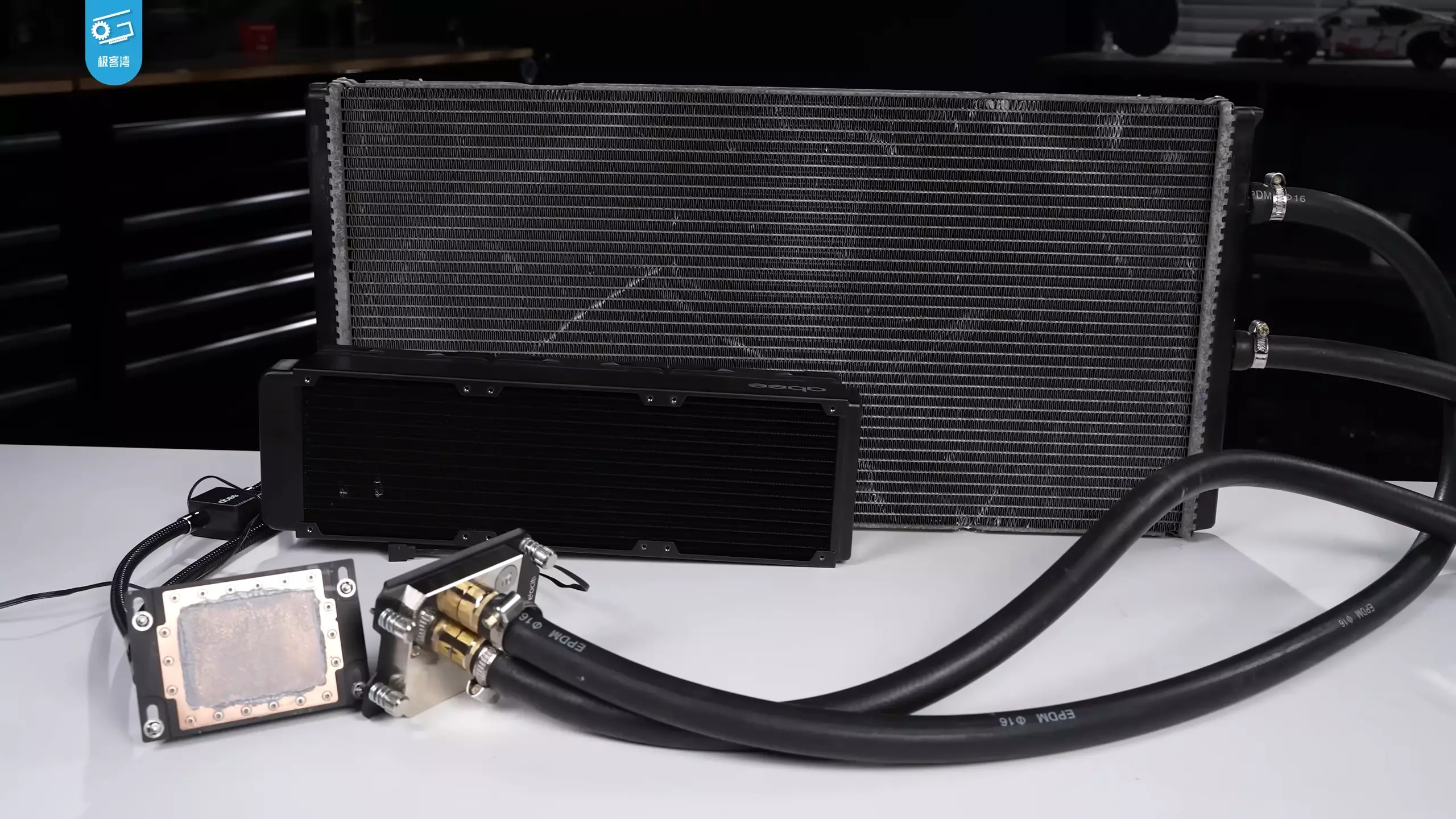In the relentless pursuit of higher processor performance, enthusiasts and professionals alike have historically relied on tried-and-true cooling methods—air cooling, traditional liquid cooling loops, and, at the extreme end, the mysterious world of extreme overclocking with liquid nitrogen or dry ice. However, a recent experiment by the YouTube channel Geekerwan challenges this notion by daring to think outside the box—what if we repurpose automotive cooling components to tame some of the most powerful CPUs on the market? While this may seem like a mad scientist’s fantasy, it highlights a broader question about the flexibility and limits of cooling technology in the quest for peak overclocking.
What Geekerwan did was extraordinary: they built a makeshift cooling system combining a BMW M4 radiator, Toyota Highlander fans, and a water block, all working together to cool AMD’s monstrous Ryzen Threadripper Pro 9995W—a 96-core monster capable of consuming over 1000 W of power when overclocked. The audacity of connecting automotive parts designed for a different thermal environment to a high-performance CPU underscores the inventive spirit that often drives technological experimentation. While it’s not practical for everyday use, the project embodies a desire to challenge conventions and explore how far we can push hardware.
The Reality of Overclocking with Non-Standard Cooling
Despite the ingenuity, the results reveal the hard limits of unconventional methods. The team managed to sustain a stable 4.9 GHz across all 96 cores—a feat considering the setup’s inherent inefficiencies. Notably, this is a significant achievement when contrasted with the world record of 5.8 GHz achieved through liquid nitrogen cooling, which is as much a spectacle as it is a technical feat. The point of comparison isn’t just speed; it’s about practicality, safety, and resourcefulness.
The setup’s limitations became immediate. The large surface area of the BMW radiator, while impressive visually, was underutilized in heat transfer efficiency given the CPU’s heat output. The custom fans—sourced from a seafood market—proved to be surprisingly powerful but highly inefficient compared to purpose-built PC fans. These fans alone drew 100 W, consuming a sizable chunk of the power budget and complicating the cooling process further. The entire assembly, while functional in a pinch, demonstrates that automotive cooling systems aren’t optimized for the nuanced thermal demands of high-frequency CPUs.
Lessons Learned and Broader Implications
This unusual experiment nudges us to reconsider the rigid boundaries traditionally associated with cooling technology. While it’s clear that car radiators and automotive fans are not suited for consistent, day-to-day CPU cooling—nor should they be—the core lesson lies in the value of cross-domain innovation. The endeavor shows that, under the right circumstances, unconventional materials and techniques can achieve results that seem impossible within the limits of conventional PC cooling.
Yet, the practicalities of such setups are stark. The experiment was not focused on building something scalable or safe but rather on busting through perceived barriers to test the CPU’s potential. It’s unlikely that anyone will adopt car cooling systems for their gaming rigs or workstations, as the complexity, size, and power consumption make it impractical. Nevertheless, this DIY spirit fuels the progressive push towards more efficient, greener, and perhaps future-proof cooling solutions.
Remarkably, these types of experiments highlight a fundamental truth: innovation often arises from failure or trial-and-error. While automotive radiators will never replace custom loop liquid coolers or advanced phase-change systems for everyday overclocking, they provoke engineers and enthusiasts to think differently. They remind us that the path to technological excellence isn’t always linear, nor confined within the typical toolbox.
The Future of Overclocking and Cooling Innovation
Ultimately, this stunt sits at the intersection of creativity and risk. It questions whether we are truly maximizing the potential of our hardware or merely following comfortable routines. The boldness of connecting a BMW radiator to a high-end AMD CPU underscores a willingness to experiment and a recognition that the status quo may not be the only route forward.
The takeaway? While mainstream enthusiasts should continue to rely on purpose-built, reliable cooling systems, the spirit of innovation requires daring experiments like these. They serve as proof that sometimes, breaking the rules yields valuable insights—even if the immediate practical benefits are negligible. The challenge now is to extract lessons from such experiments and apply them to the future development of cooling solutions that blend efficiency, safety, and the relentless hunger for performance. After all, pushing the boundaries of what’s possible drives the entire industry forward, one unconventional idea at a time.

